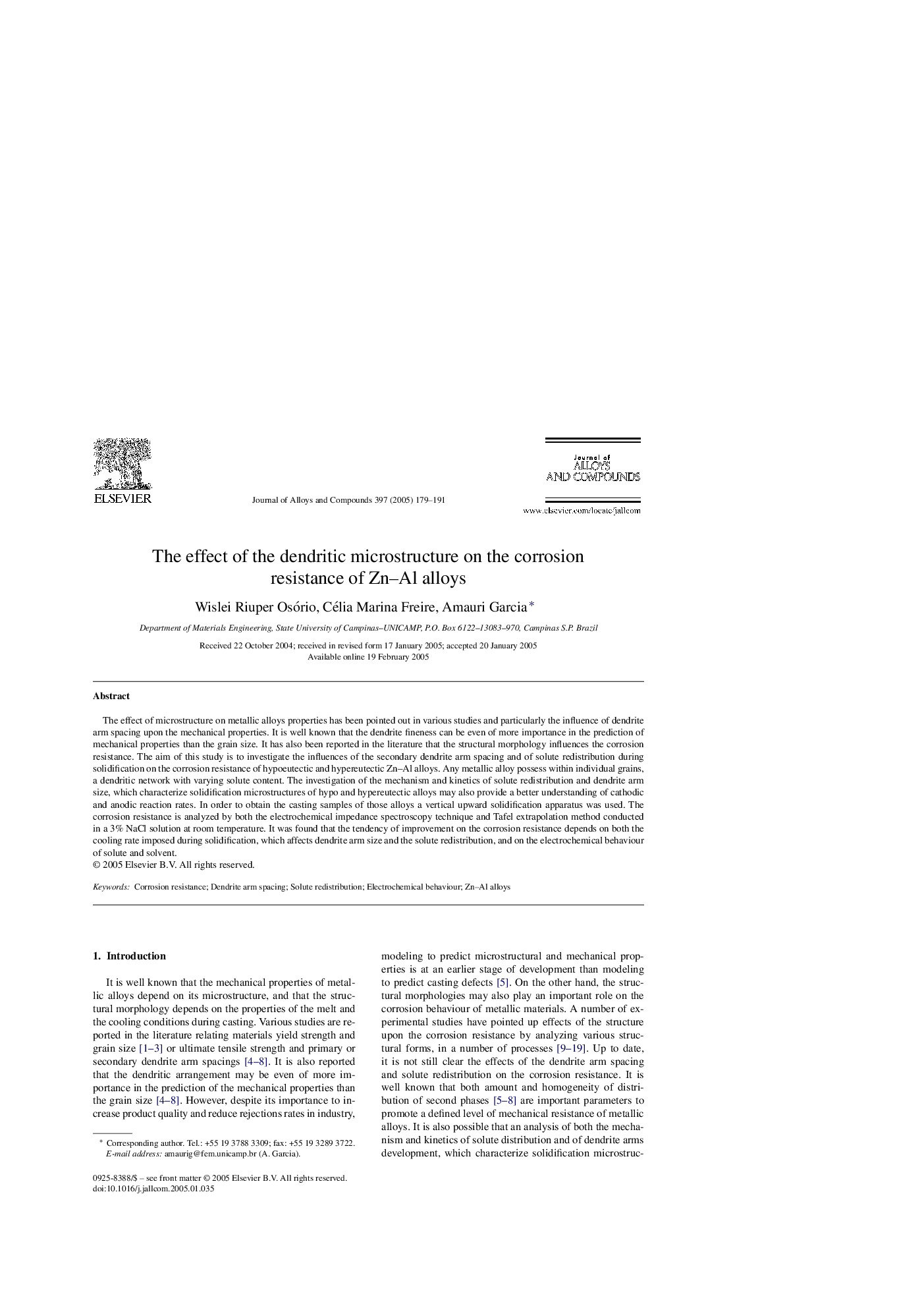| Article ID | Journal | Published Year | Pages | File Type |
|---|---|---|---|---|
| 9803619 | Journal of Alloys and Compounds | 2005 | 13 Pages |
Abstract
The effect of microstructure on metallic alloys properties has been pointed out in various studies and particularly the influence of dendrite arm spacing upon the mechanical properties. It is well known that the dendrite fineness can be even of more importance in the prediction of mechanical properties than the grain size. It has also been reported in the literature that the structural morphology influences the corrosion resistance. The aim of this study is to investigate the influences of the secondary dendrite arm spacing and of solute redistribution during solidification on the corrosion resistance of hypoeutectic and hypereutectic Zn-Al alloys. Any metallic alloy possess within individual grains, a dendritic network with varying solute content. The investigation of the mechanism and kinetics of solute redistribution and dendrite arm size, which characterize solidification microstructures of hypo and hypereutectic alloys may also provide a better understanding of cathodic and anodic reaction rates. In order to obtain the casting samples of those alloys a vertical upward solidification apparatus was used. The corrosion resistance is analyzed by both the electrochemical impedance spectroscopy technique and Tafel extrapolation method conducted in a 3% NaCl solution at room temperature. It was found that the tendency of improvement on the corrosion resistance depends on both the cooling rate imposed during solidification, which affects dendrite arm size and the solute redistribution, and on the electrochemical behaviour of solute and solvent.
Keywords
Related Topics
Physical Sciences and Engineering
Materials Science
Metals and Alloys
Authors
Wislei Riuper Osório, Célia Marina Freire, Amauri Garcia,
